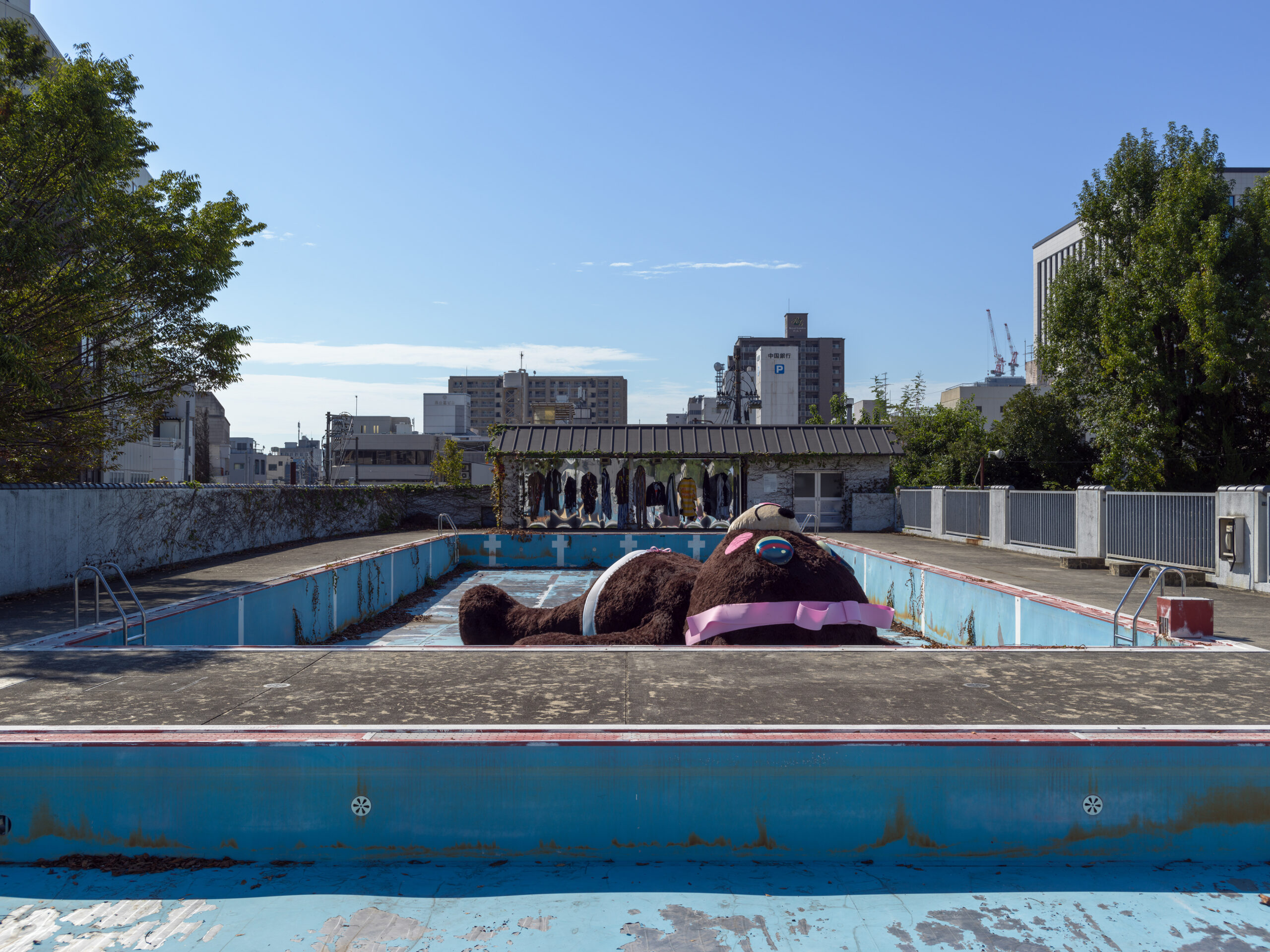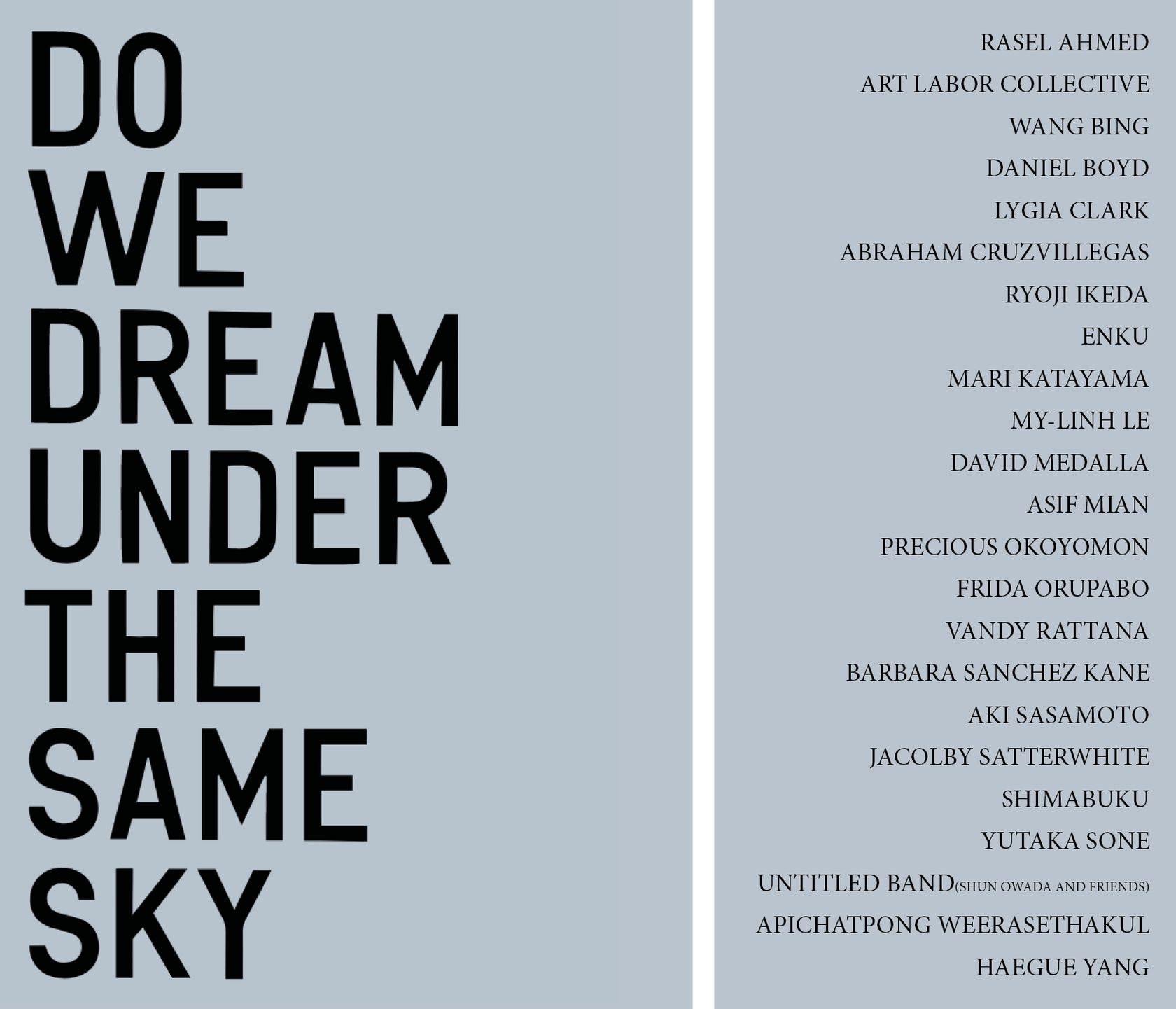Okayama, Japan
Precious Okoyomon
“Touching My Lil Tail Till the Sun Notices Me”
at the Okayama Art Summit
30 September to 27 November 2022
“Obviously, Japan, at least in the 20th century, has been marked by great historical tragedy. Atrocity of that nature and scale is a fixation in my practice at large, so trying to understand how the visual culture of the nation at present was connected with or even the result of an attempt to metabolize its violent past, immediately felt like a task I couldn’t ignore.”
Precious Okoyomon
About the project
rossogranada is proud to support Precious Okoyomon’s at the Okayama Art Summit with the site-specific installation,
“Touching my Lil Tail Till the Sun Notices Me”.
This is an enormous stuffed bear lying on its back in a field of wildflowers planted in the drained swimming pool of a former elementary school. The plush beast stares up at the sky as viewers look on to the figure’s form from above, its prone pose suggesting submission. Clothed in lace underwear, the bear’s unexpected perversity invokes the forbidden and deviant sexuality that suffuses our early experiences of childhood, a time marked by the slow but horrific discovery of our own bodies and their monstrous capacities and appetites for pleasure. Here as in much of the artist’s work, Okoyomon utilises cuteness as a conceptual strategy to disarm the viewer, the adorable appearance of the enlarged toy aesthetically sublimates Okoyomon’s otherwise brutally straightforward psychoanalytic investigation into the catastrophe of desire and its ritualised erasure from public life.
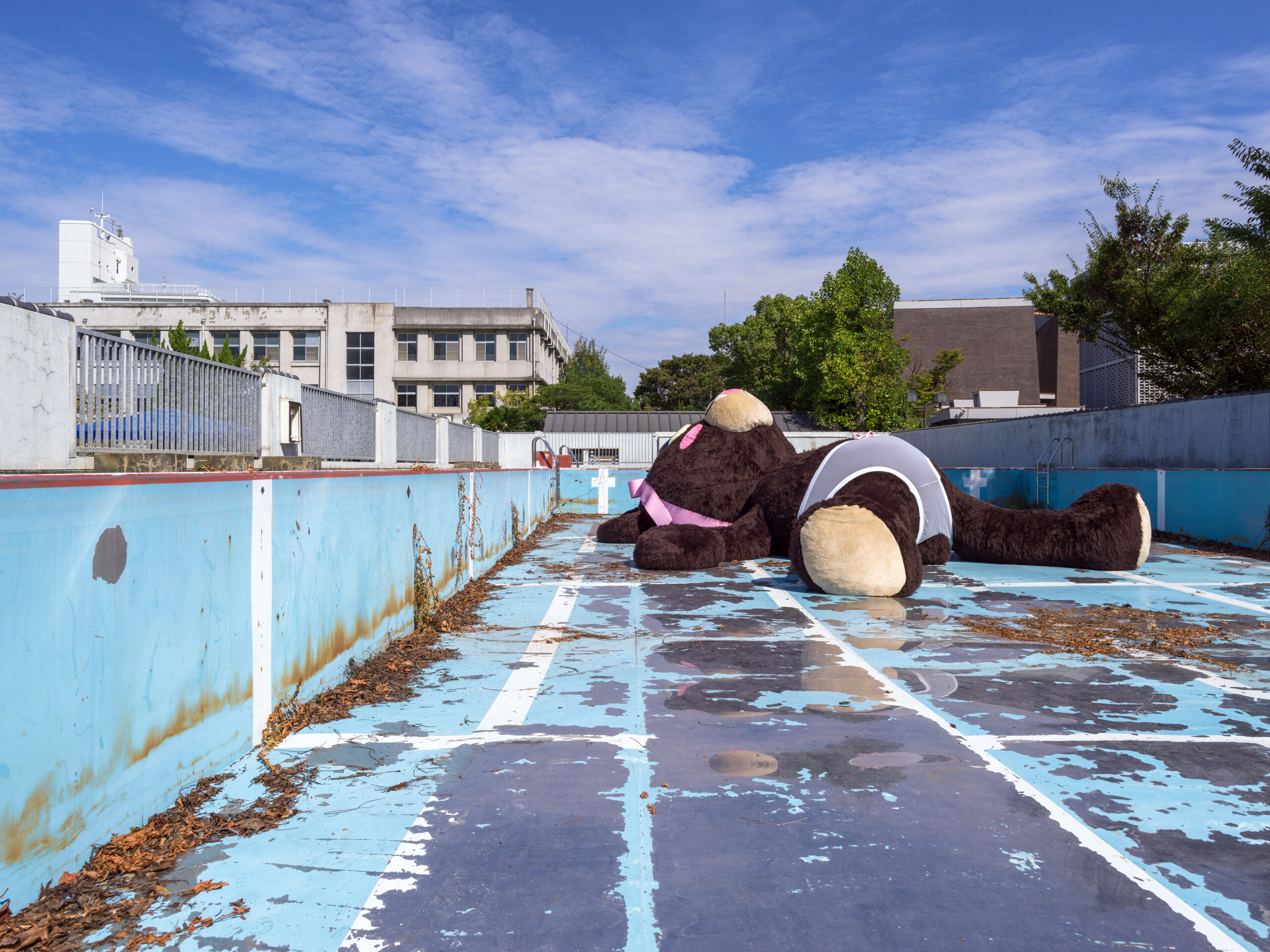
Exclusive interview
rossogranada in conversation with
Precious Okoyomon
rossogranada: End of last September you presented a new installation at the Okayama Triennale in Japan. Can you tell us how ‘Touching my Lil Tail Till the Sun Notices Me’ connects with the city of Okayama, or is there an intentional disconnect going on?
Precious Okoyomon: During my first site visit to Okayama, I was very inspired by the saturation of daily life throughout Japan with the aesthetics of cuteness and I knew I wanted to address that in some way, either obliquely or headlong. Obviously, Japan, at least in the 20th century, has been marked by great historical tragedy. Atrocity of that nature and scale is a fixation in my practice at large, so trying to understand how the visual culture of the nation at present was connected with or even the result of an attempt to metabolize its violent past immediately felt like a task I couldn’t ignore. A lot of the things I make have to do with childhood or address children as their primary audience, so I also became excited by the idea of infantilization, which I think demands to be unpacked when you are talking about the history of Japan. In that way the sculpture has everything to do with its context, but I hope it also feels entirely alien, like something from another world.
RG: This giant teddy bear is an installation diametrically different to the garden one currently on show at the Venice biennale. What drew you into this new conceptual direction?
PO: I’m so pleased you noticed that. On an extremely practical level, I just felt bored and wanted to do something different. I knew I didn’t want to make an installation in a room. I was so excited by the opportunity to work outside of an exhibition space, to make something that would live essentially in the world. I knew I didn’t want to work with living material. I was tired of being told that I make ecological art because I work with plants in my work. I make work that, I hope, has to do with the natural history of this earth and with our intimate individual experiences of it and each other. For me, all of these, admittedly broad or diverse, interests hang together at the same time. I felt like to a certain extent, it was lazy how much the work in Venice was reduced to some kind of positivist statement about the climate crisis and the importance of nature, or at least that’s what I perceived happening. There’s nothing wrong with that kind of art, it’s just not what I do. I am interested in perversity and complexity. I hope this sculpture is weird enough that it resists all of that, that it’s able to entirely refuse the expectation placed on so many artists that look like me to produce things that give us hope. And then finally, as I said, on an entirely formal level, I didn’t want to look at irrigation plans or to think about spatial experience in terms of how you proceed from one side of a gallery to another for another three months, I just wanted to make a sculpture.
RG: Considering this is your first monumental scale outdoor sculpture, can you tell us how you went about the making process and the public response? We saw that people want to interact with it, touch it, play with it. What were you looking to evoke with this work and why?
PO: It is always fascinating to get to watch people interact with the artwork. I remember telling my gallerist Quinn before the piece was installed, “we have to figure out how we are going to deal with people trying to climb the sculpture” and he sort of turned to me and said “what are you talking about? no one is just going to mount the sculpture.” And of course they did. More than that they tried to tear its limbs apart, and even succeeded temporarily in untying its ribbons. I always say that I like chaos. Working with plants or animals is one way I get to try to live chaos in my work. Working at monumental scales is another. When you present something massive like this sculpture or the installation in Venice for example you are surrendering to the audience because what you have presented them with is just too big for you to try to monitor. For me this is just another way for the work to engage the exciting potential of what is essentially a form of participatory anarchy.
RG: In one of our talks, you mentioned that this work was conceived with children in mind that you may agree are too often overlooked when it comes down to contemporary art. Is this an optimistic work for you? Are you celebrating childhood with this gestural installation?
PO: Certainly nothing I make is optimistic. But I do feel very strongly that childhood is an under-explored and even more so under-understood period of the human experience. Psychoanalysis seems to be the only real structure of knowledge that centers its investigation of life around childhood, and I think that is why it has been so influential for me both personally and in my work.
RG: Which poem gave birth to ‘Touching my Lil Tail Till the Sun Notices Me’?
PO: I actually wrote this poem while I was in Japan, and I wrote it for a stuffed animal that I was traveling with. One of my many comfort objects. A lot of the writing that I do is done entirely in private. And this poem was meant to be between just me and my own stuffed bear, the bear that actually inspired this piece.
RG: What does the Sun stand for, in three words?
PO: (the) Angel of history.
RG: What a nice trail of thought!
RG: Contrary to gardens, this strikes us like a static work. Do you see a migratory future in the work’s life in a way that aligns with other works you have conceived i.e. your preoccupation with kudzu?
PO: I love this question. After the run of the shows, I did at the MMK and for the Biennale in Venice that featured Kudzu vines in a really central way, all of the vines that grew inside of the installations over the however many months the exhibitions were open to the public were incinerated and turned into ash. I later returned to the ash as material for other works. The ash from the MMK became a part of my show at Performance Space, New York. And I don’t know what the ash from Venice will become just yet. The bear in Okayama seems like it would be simpler to deal with than the excess Kudzu because it more neatly fits into our idea of what an artwork is and looks like but Its been hard for me to imagine an afterlife for it, partly because on a practical level it’s so physically cumbersome. I’m excited to try to figure that out, how to deal with basically its death.
RG: You will see this year come to an end with the simultaneous successful closing of a Biennale and a Triennale. What is the takeaway of your participation in these two exhibitions and what lies ahead?
PO: I am very tired. There are a lot of exhibitions already locked into the schedule for the next couple years ahead, major works I have wanted to make for my entire life that for the first time I am getting the opportunity or the resources to approach, but I also really need a moment to reevaluate how I work and to take time for much-needed rest.
RG: Can you share a novel experience or feeling related to working in Japan?
PO: I felt a deep kindness and love and a real respect for time, space, and detail, that’s infused into the fabric of the way that everything gets made and used. I was really taken by just the tiny water catchers in the subway. And then in terms of the experience of making this sculpture, that was something deeply special too. I was obsessed with the level of care, of attention, the patience and slowness that simply doesn’t exist in New York, but also everyone’s efficiency that felt to me like a species of respect I just didn’t know existed before. There’s truly an energy that just flowed and flowered, and I think you can feel the uniqueness of it pulsing through the finished piece.
RG: Tell us something about love and art. Perhaps your all-time favourite poem?
PO: Dana Ward’s epic 2013 The Crisis of Infinite Worlds. Read it immediately if you can, and let it change you!
RG:The one feeling that words can’t fully convey is…
PO: Love.
Artist talk
Precious Okoyomon discussing the theme of Okayama Art Summit 2022, “Do we dream under the same sky”,
and their thoughts on their work. How do artists grasp this world and continue to create?
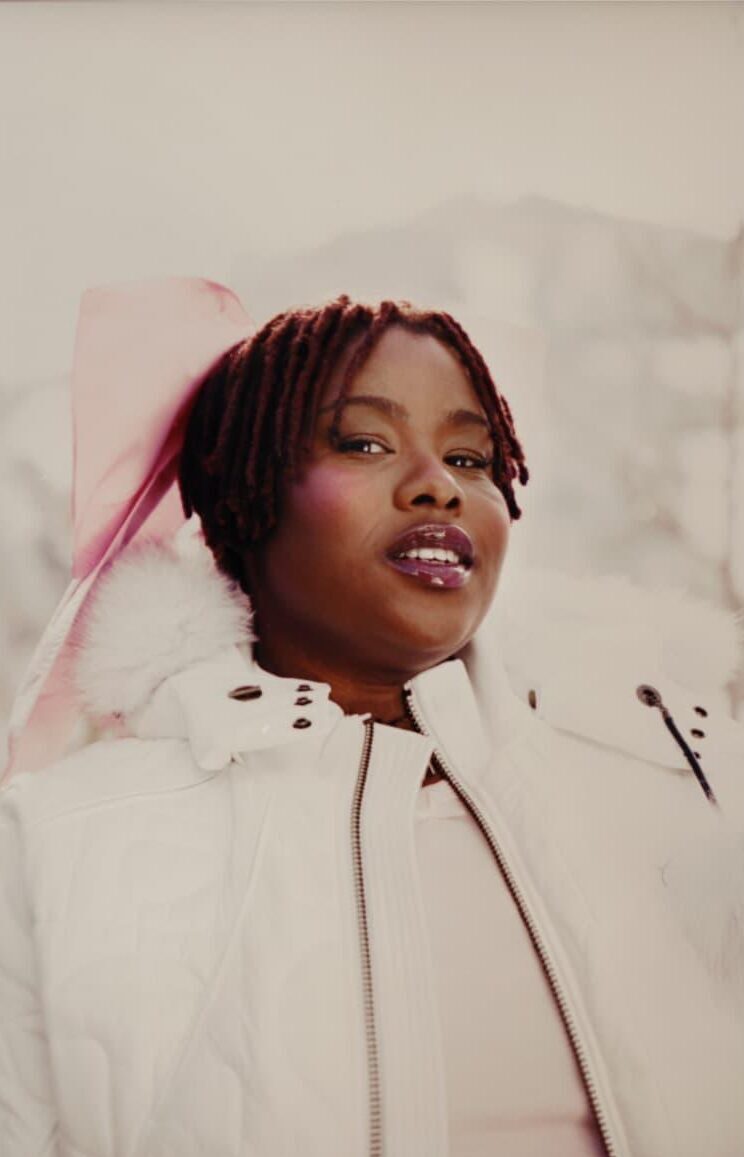
About the artist
Precious Okoyomon (born in London, based in New York City) is a Nigerian-American artist and poet whose multidisciplinary practice investigates the racialisation of the natural world, Christianity, intimacy and ideas and experiences of life, death and time. Their installations, sculptures, performances and poetry often draw from their family history as well as their encounters with queerness. Their most ambitious installation to date, which opened at the Aspen Art Museum in June 2021, reimagines the museum’s rooftop with each passing season as part of an ongoing investigation into how the miracles and terrors of our natural world have been indexed into racialised categories. They have had solo exhibitions at the Luma Westbau in Zurich (2018), the Museum für Moderne Kunst in Frankfurt (2020) and Performance Space New York (2021). Their second book But Did U Die? (2021) explores the complexities of their identity as a black queer immigrant inhabiting a specific class position. Okoyomon was a 2020 artist-in-residence at the LUMA Arles, and they are a recipient of the Frieze Artist Award (2021). For 2022, Okoyomon participates at the Vennice Biennale with a new work titled To See the Earth before the End of the World and at the Okayama Art Summit with a site-specific installation titled Touching my Lil Tail Till the Sun Notices Me.
CHILDREN’S WORKSHOP
On the 16th of October, the Okayama Art Summit 2022 Public Programme held an advance workshop for children for the “Enjoy Art Tour with Children Navigator.” The children were divided into groups to view artworks at the former Uchisange Elementary School and discussed their feelings and thoughts. The children chose their favourite artworks and practiced their skills at the workshop on 5th of November, before taking on the challenge of the actual performance the next day.
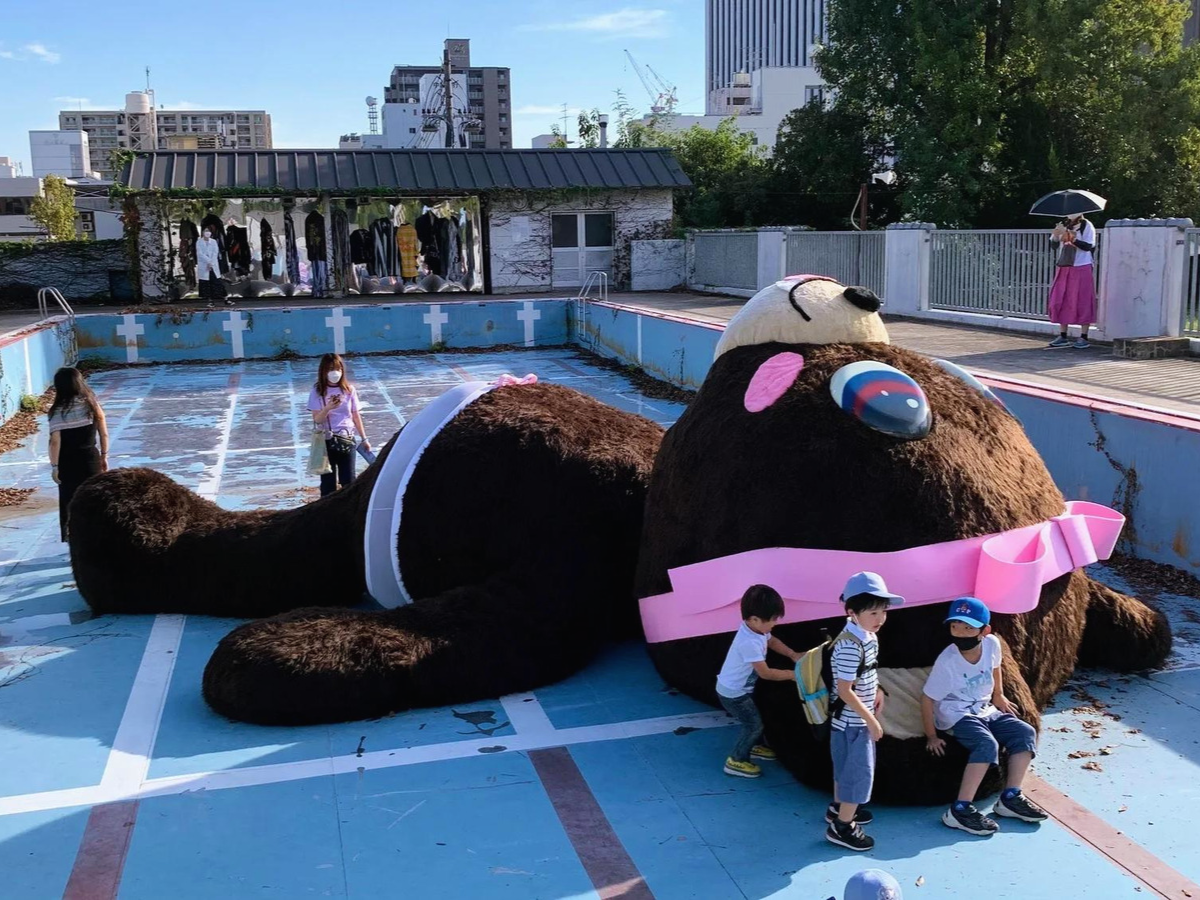
About the Okayama Art Summit
Every three years, Okayama City stages the Okayama Art Summit, essentially a triennial of contemporary art. For 2022 edition curated by Rirkrit Tiravanija and titled ‘Do we Dream Under the Same Sky’, 28 artists have been invited from around the world to respond to the topic. These artists are: Rasel Ahmed, Art Labor in collaboration with Jrai artists, Wang Bing, Daniel Boyd, Lygia Clark, Abraham Cruzvillegas, ENKU, Ryoji Ikeda, Mari Katayama, My-Linh Le, David Medalla, Asif Mian, Precious Okoyomon, Frida Orupabo, Vandy Rattana, Bárbara Sánchez-Kane, Aki Sasamoto, Jacolby Satterwhite, Shimabuku, Yutaka Sone, Apichatpong Weerasethakul and Haegue Yang.
Dates: 30.09.22 – 27.11.2022
“I like the potential of the next Okayama Art Summit to be focused on peripheral practices by artists whom may share in common their itinerant backgrounds. In itinerant, I mean that most of the artists in this selection are coming from cultural and social backgrounds that are diverse. Though they may have their practices and their locations in the centre of western artistic hegemony, we could understand that their positioning in that (western) hegemony, is based on their identification with positions other than western. That their lives and histories are constructed, in difference, to the west.”
Rirkrit Tiravanija, Artistic Director, Okayama Art Summit 2022.
The Okayama Art Summit is an international exhibition of contemporary art that takes place in the renowned Setouchi region of Japan every three years.
The 2022 edition, titled Do we dream under the same sky, is curated by Rirkrit Tiravanija and brings artists from a diverse array of cultural backgrounds and practices like Precious Okoyomon, Apichatpong Weerasethakul and Abraham Cruzvillegas. Tiravanija invites us to “dream in a sky of difference, in a sky of multiplicity, of narratives of representation that is peripheral to the western canon.” So that this dream can inspire receptivity to ways of existing beyond the hopes and aspirations that occur through our daily structures.
The exhibitions are held in various historical landmarks and cultural sites of Okayama City, including the Okayama Korakuen Garden and the Former Uchisange Elementary School.
Okayama Art Summit 2022 prides itself in offering visitors the opportunity to experience a unique interaction with art that transcends time and space within the historic context of the city and likewise providing a generous invitation to the thought processes of the artists.
